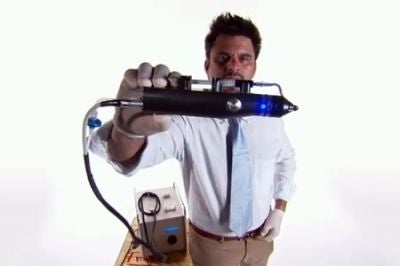Sci-fi spray gun cuts healing time for burns

Medical science has a new tool, dubbed "skin cell gun," which fires stem cells onto burned skin, cutting recovery time and saving lives.
Burn injuries notoriously can take weeks and months to heal. But rather than sheets of skin being grown over a period of time and applied to the patient, researchers are now harvesting stem cells from a patch of healthy skin, putting them into a water solution, and then spraying the mixture onto the burned area, quickening the healing time to a few days. The process takes about 90 minutes, compared to traditional treatments that can take weeks or months, from which patients are at risk of dying from infection.
Announced in a release on February 3, the new device is being developed by researchers at the US-based University of Pittsburgh's McGowan Institute for Regenerative Medicine.
The skin gun is part the vision of the $250-million Armed Forces Institute of Regenerative Medicine (AFIRM), a consortium of 30 research institutions established in 2008 by the US Department of Defense to come to the aid of wounded soldiers.
Science and tech magazine Popular Science reports on another one of AFIM's projects, which involves building an even weirder medical creation: an "inkjet printer" that can create a living organ on demand, such as a liver. "The device uses cartridges filled with cells from various types of tissue, along with a mix of growth factors and special nutrients, to 'print' organs layer upon layer," reports the article.
The skin gun will be featured on the US-based National Geographic Channel on Monday, February 7, in a program called "How to Build a Beating Heart," which examines cutting-edge techniques of tissue regeneration.
http://www.mirm.pitt.edu/news/article.asp?qEmpID=328
Read about other AFIM projects:
http://www.popsci.com/military-aviation-space/article/2008-06/rebuilding-troops?page=
Join our commenting forum
Join thought-provoking conversations, follow other Independent readers and see their replies
Comments
Bookmark popover
Removed from bookmarks